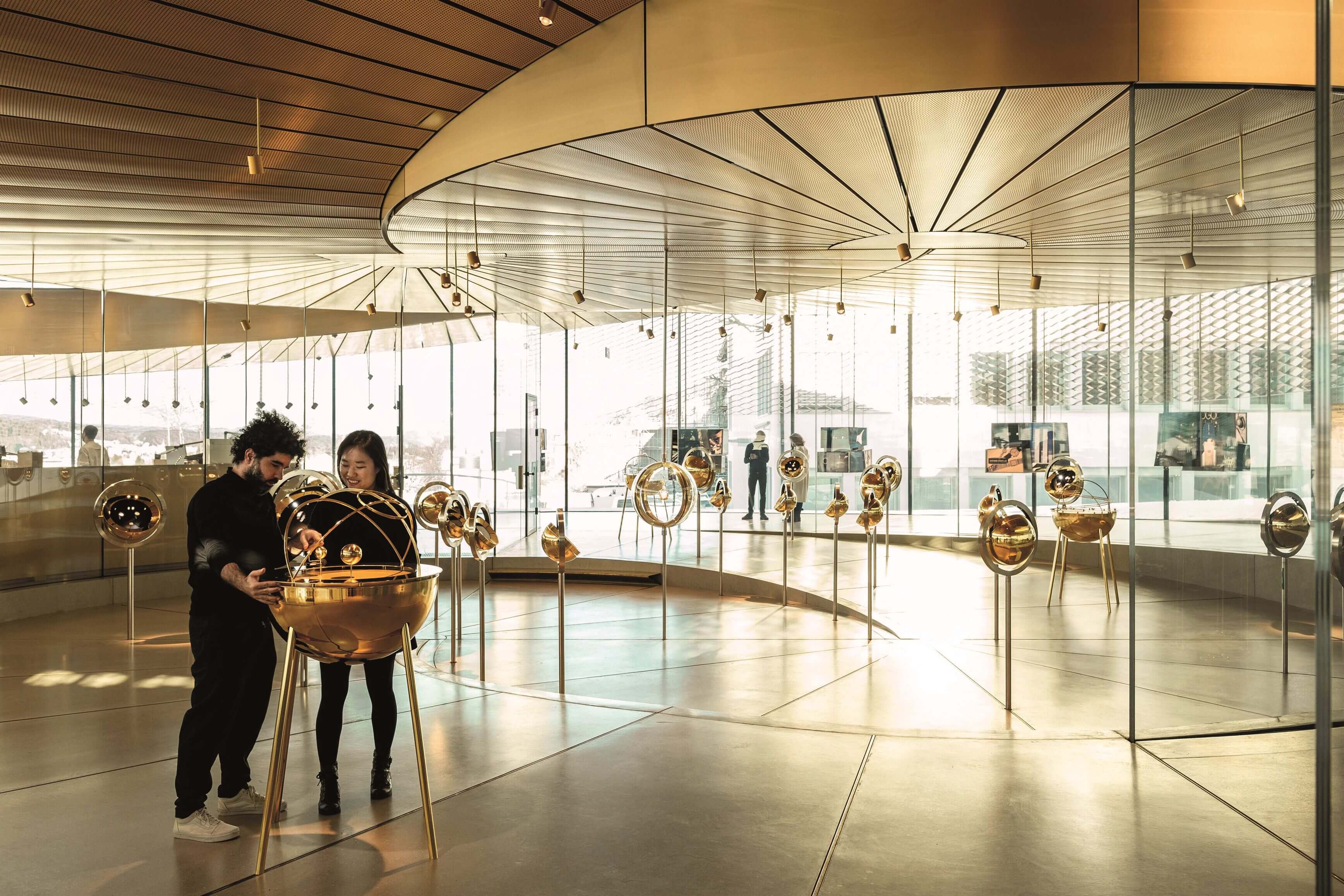
MUSÉE ATELIER AUDEMARS PIGUET
On the outskirts of the small village of Le Brassus, secluded in a high mountain valley of the Swiss Jura, lies the Musée Atelier Audemars Piguet – an iconic total work of art of the Bjarke Ingels Group (BIG) and Atelier Brückner.
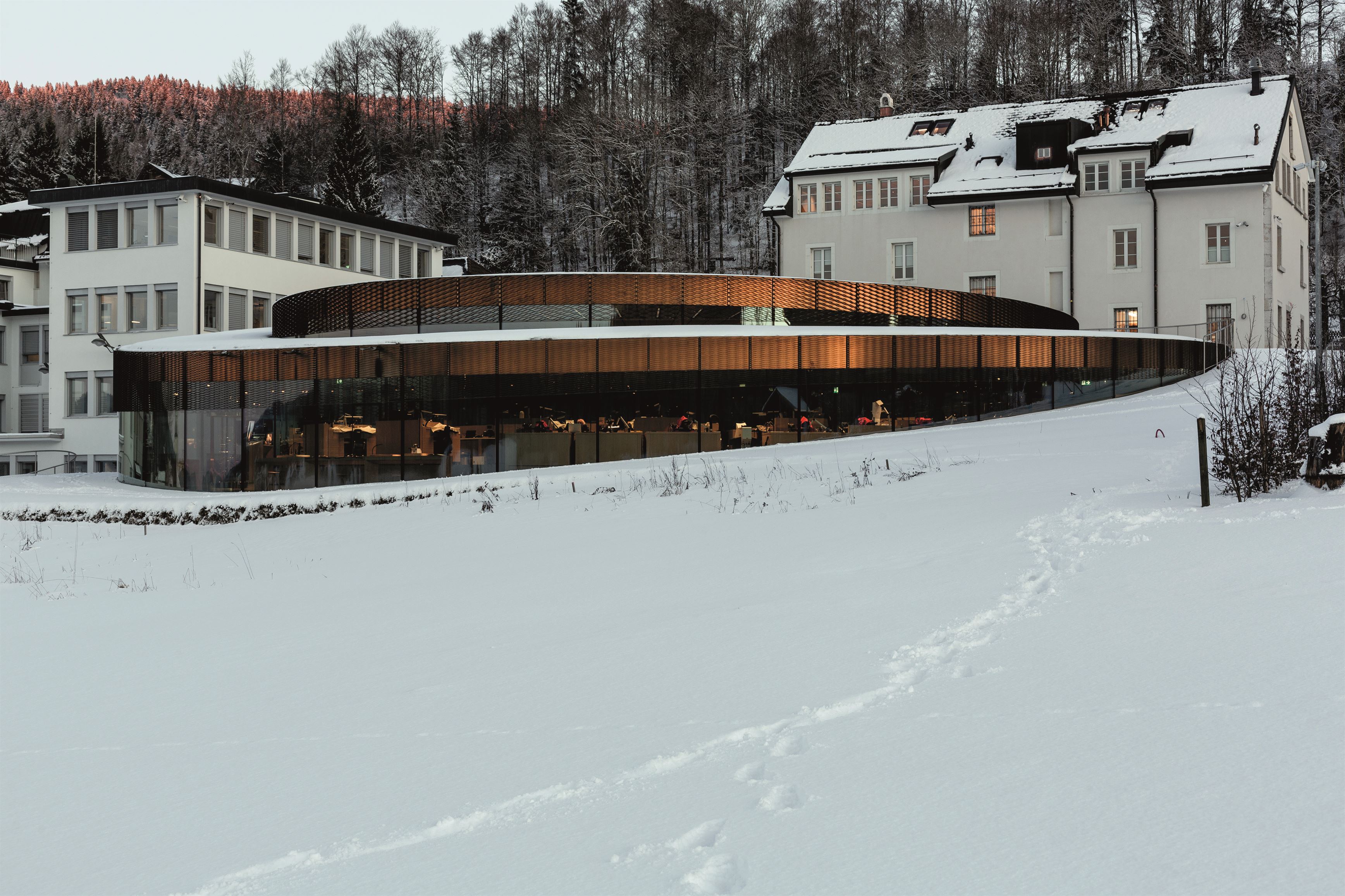
The museum is situated in the historical location where the company of the luxury watch brand Audemars Piguet was established in 1875. In the light-filled building, Atelier Brückner has incorporated a rhythmically flowing route through the exhibition. It starts in the historic building and, going in a clockwise direction, slopes gently down into the heart of the spiral, after which it rises again in the contrary direction. Visitors experience the route as a flowing continuum with a composed narration. Each chapter has its own design language and is introduced by an interlude, a mechanical sculpture or an artistically designed display item. The showcases are positioned within the architecture precisely. Their appearance changes, depending on the particular part of the narration being provided and the architectonic requirement.
More than 300 timepieces – each one unique and a superlative exemplar – are shown in the exhibition. A start is made with early works of the watchmaking art, including a pocket watch by Jules Louis Audemars made of 18 carat rose gold, which combines a perpetual eternal calendar with the mechanism of quarter-hour repetition and the independent "jumping" second. The complicated pocket watch by Joseph Piguet, dating from around 1769, is the oldest object of the exhibition and undoubtedly its masterpiece.
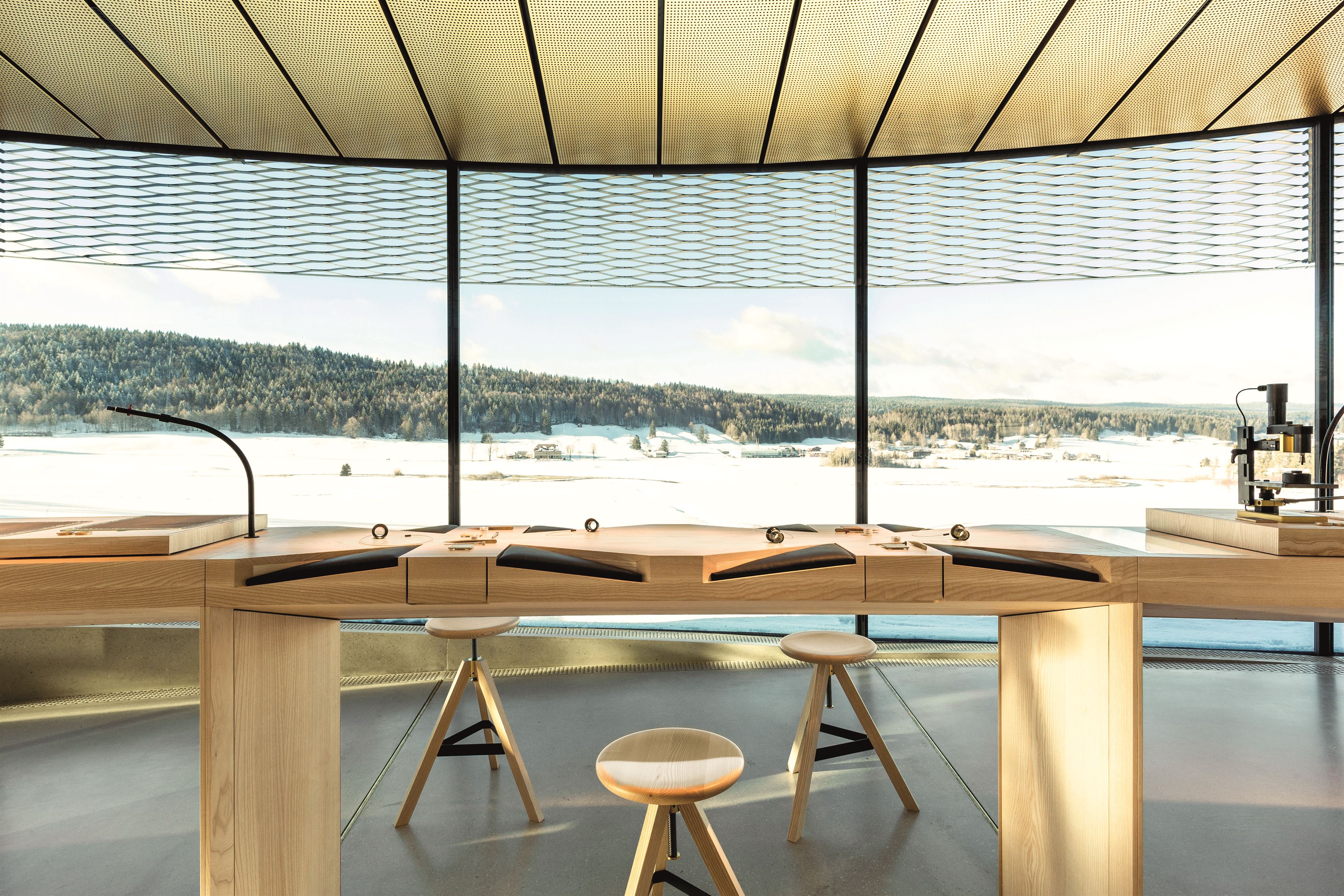
After the "First Watchmakers", the focus turns to the "Mechanical Heart" of the watches, which is introduced with an artistic sculpture by François Junod and accompanied by mechanical models, which visitors can use to see how individual components interact with each other.
With this knowledge, the visitor now approaches the "Complications" in the heart of the spiral. They are the core feature of the company's brand. Following the "Complications", there are the "Superlatives" with the thinnest and smallest watches, introduced by the installation "Seeing the Invisible": microscopes designed as telescopes illustrate how unbelievably small and fine the components of a watch are – in some cases as thin as a human hair.
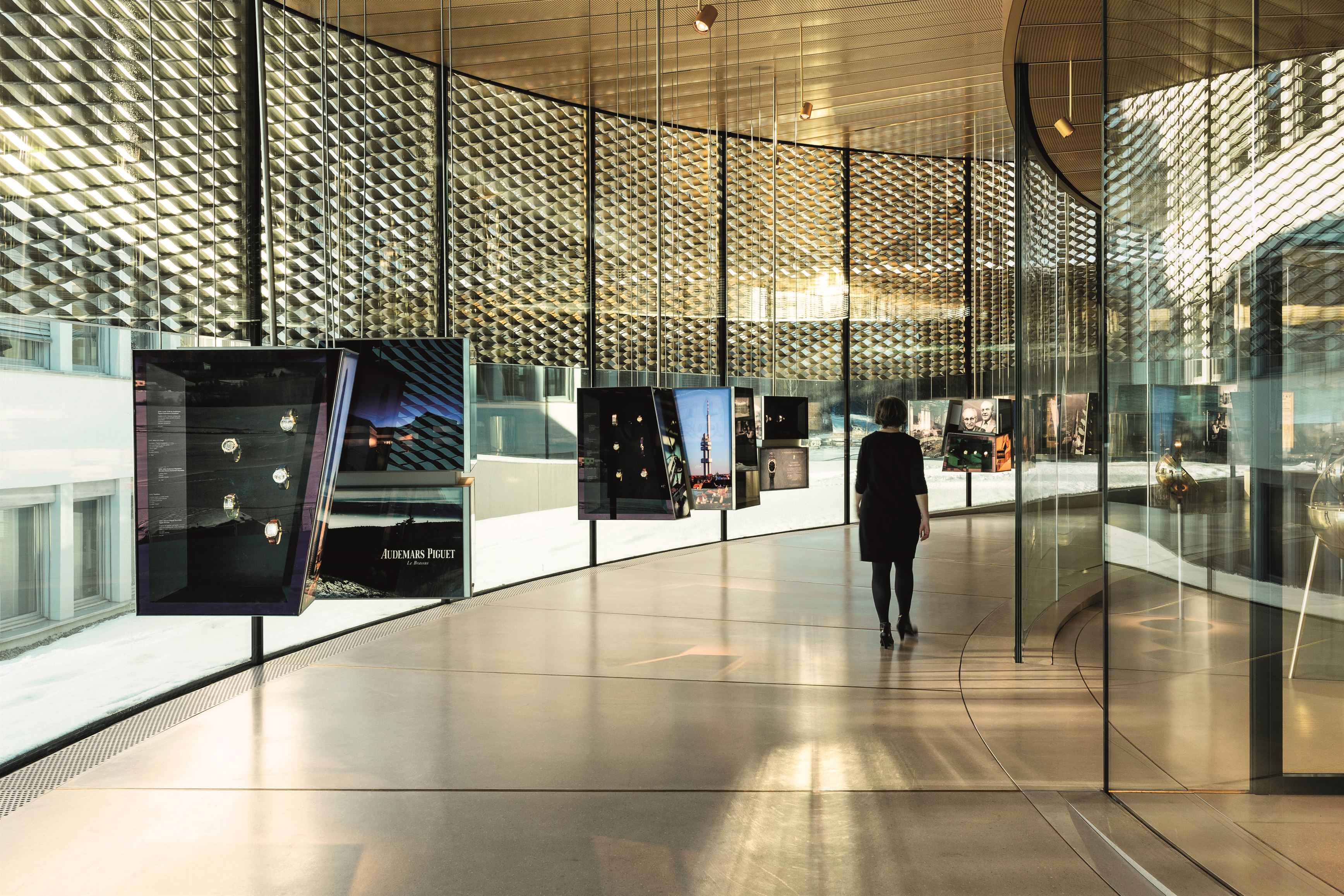
At a workbench, visitors can re-enact the technical and design aspects of this craft as well as the design process, for example by polishing surfaces with fine sandpaper and screwing tiny screws into a metal plate – an especially difficult challenge. At this moment at the latest, the difficulty of the work that the professional watchmaker does becomes clear.
The spiral-shaped building is embedded in the surrounding landscape and features curved walls made of load-bearing structural glass. Optically flowing transitions characterise the exhibition. Depending on the time of day and the season, the overall impression changes. Reflections and shadows combine to create a spectacle in which the course of time is inscribed.
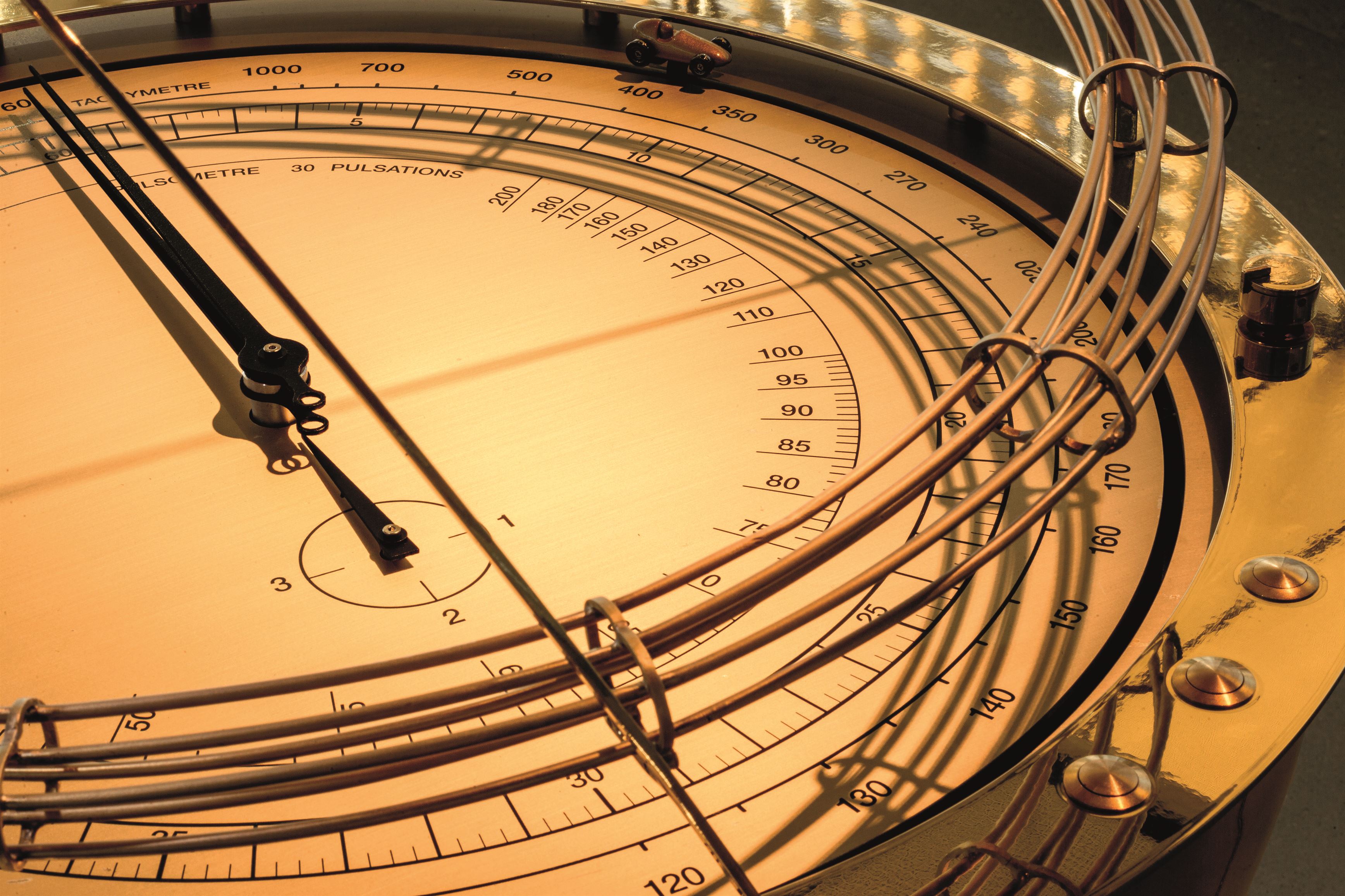

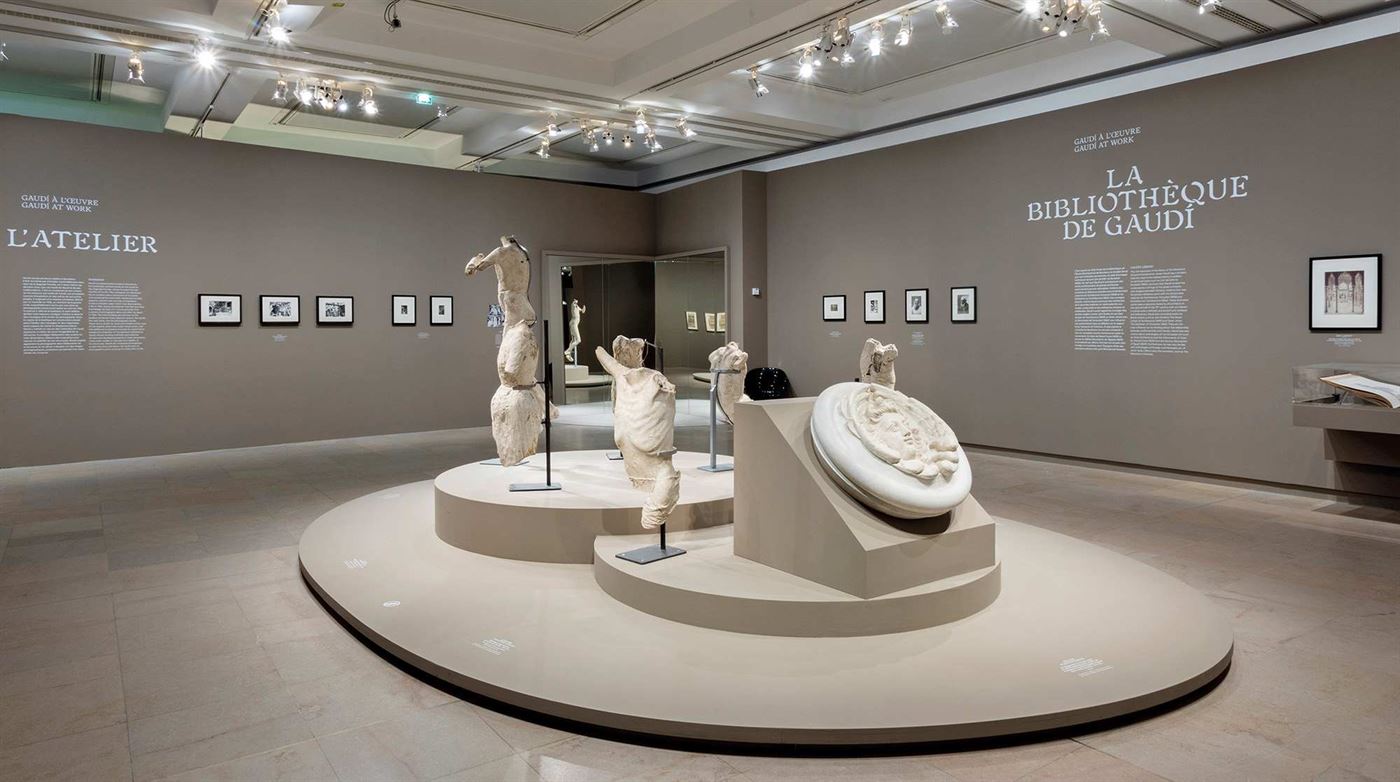
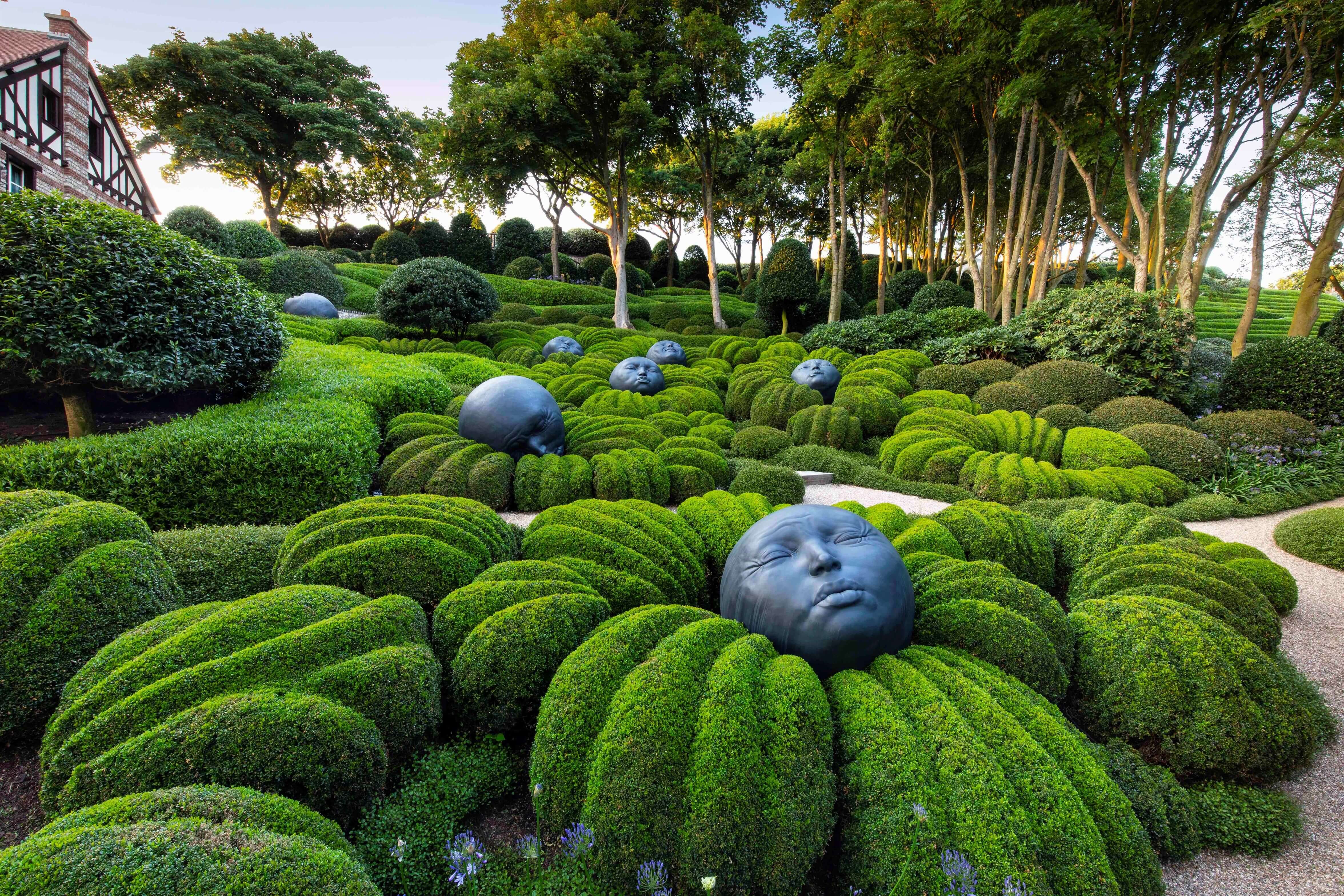
Comments